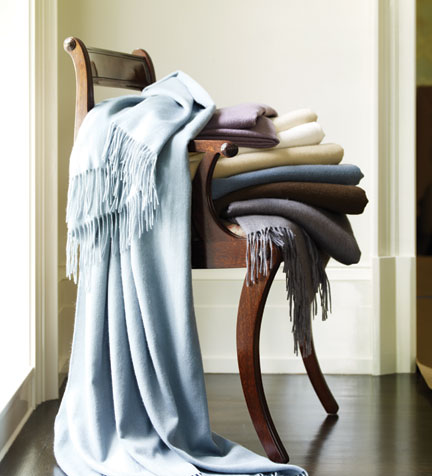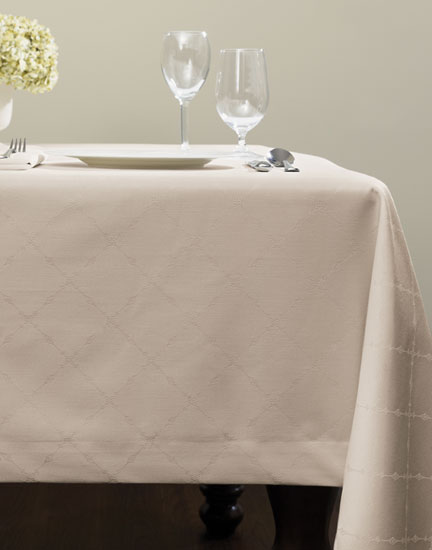Save to...
Sferra Answers: How Do I Use Euro Shams?
Question: What are Euro shams? How do I use them?
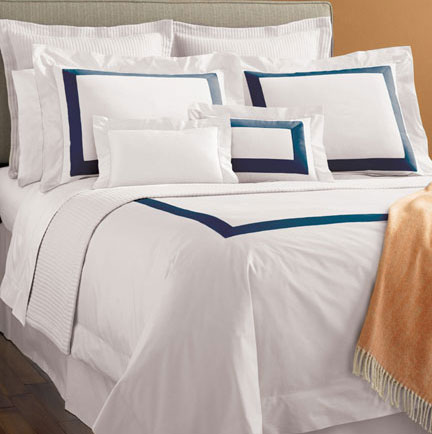
Answer: Euro shams, also known as European or Continental shams, are sized to fit a 26×26” European pillow. These pillows and shams are generally used for decorative purposes, but they can also be used as floor pillows or reading pillows. Euro shams are often designed with decorative trims or flanges, which add visual interest and increase the overall size by extending beyond the outer edge of the pillow. Unlike a pillowcase, which has the opening visible on the side, a sham has a hidden opening of overlapping fabric in the back.
The secret to setting a beautiful, luxurious bed ensemble is the layering of pillows with different sizes, shapes and patterns. In a pillow arrangement, Euro pillows are placed in the back, against the headboard, creating a background. You would generally use three Euro pillows on a king bed, two on a full or queen bed, and one on a twin bed.
In the image above, Sferra’s Euro pillows with Kendall shams are set in the back, with a layering of various styles of pillows and other sized shams in the front.
Here are a few more examples of this layering technique:
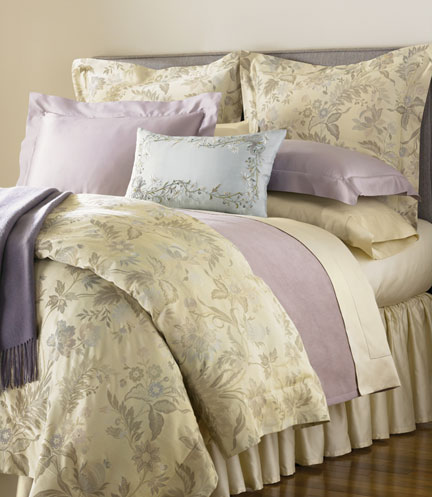
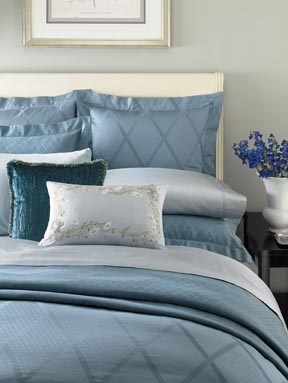
As you can see, layering with Euro and regular shams can create a lovely, textured bed ensemble. Take a look at all of our Sferra bedding options, and create a look that’s uniquely yours.
How To Keep Your Duvet Covers in Place
It’s a common problem.
You go to all the trouble to place the duvet in the cover and get it just right. Seemingly on its own willpower, it slowly shifts, until eventually the entire duvet is bunched up on one side.
Then your spouse accuses you of stealing all of the covers.

Luckily for us all, Sferra has solved the migrating duvet dilemma, ensuring domestic harmony will continue to reign.
Sferra’s down duvets have a loop on each corner and our duvet covers have ties inside at each corner. These loops and ties help keep the duvet from shifting. The duvet is inserted into the duvet cover through the opening at the bottom. The closure ensures that the duvet stays inside the duvet cover. Sferra uses buttons and buttonhole closures, as they provide a greater level of style and a more luxurious finish.
Here’s a picture illustrating the corner loop on Sferra’s Cardigan Duvets:
An ingenious solution, wouldn’t you say? Now if they could only come up with a way to get him to pick up his dirty socks and put them in the hamper…
How do Italian Men Shave?
What is about those Italian guys, always so smooth, suave, and charming?
It might have something to do with the shave: Italian men take shaving very seriously. The Romans were cleanly shaven and regarded everybody else barbarians — literally, someone with a beard. During the Middle Ages, barbers in Italy were trusted confidants and advisers, like the barber in Rossini’s Il Barbiere di Siviglia. Today, shaving is truly an advanced art form in Italy, and it shows. Just look at what a great shave these famous Italians have:


The traditional Italian shave is a complicated ritual involving, of all things, olive oil. Fortunately, Proraso has made this into a simple system for the rest of us. Here’s how the modern Italian shave works.
First, you dampen your face and apply the Pre-Shave Cream, which softens the beard and helps the razor to slide smoothly over the skin. Let it rest for a bit and really sink in. The distinctively refreshing Menthol tingle that Proraso is known for ought to make the little time-out quiet pleasant: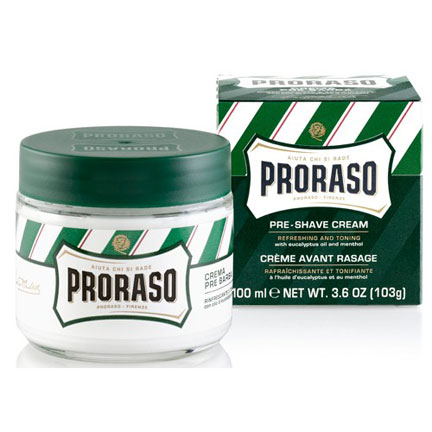
Then, apply your choice of Shave Cream …
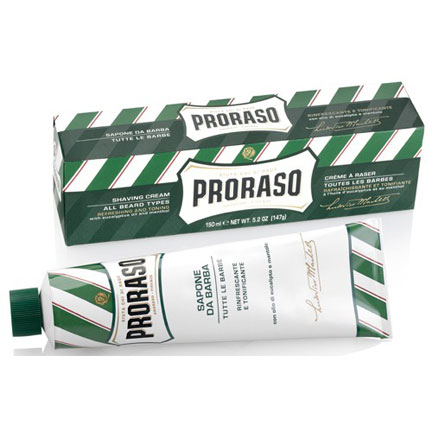
… Shave Foam – this is a smooth and rich foam with just the right consistency, and with it my Gillette Mach 3 is giving me a much closer shave than I’ve ever had before. Plus, after shaving, it doesn’t leave a thick residue in my razor like my old shaving gel did:
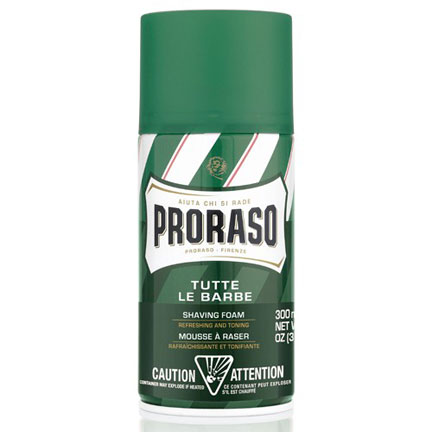
or Shave Soap.

For a truly Italian shave, we recommend the Shave soap, which must be applied with this simple little brush:

Next, wash your face and apply the After Shave, but doesn’t “Lozione Dopobarba” make it sound better?
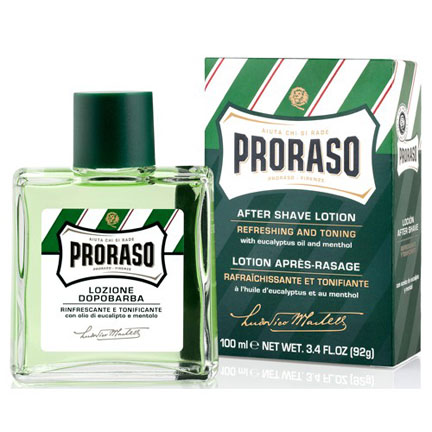
Proraso also makes specialized products for those of us with sensitive skin
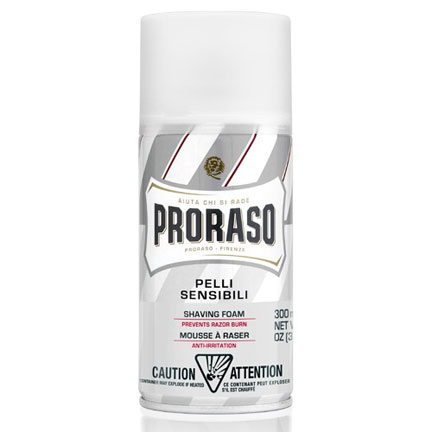
Or who have a beard, “Barba Dura” — masculine yet refined in that Italian way:

Try it, and let us know if your face says “Grazie!”
What is Cashmere?
You hear a lot about luxurious cashmere blankets, scarves, sweaters and more. But what exactly is cashmere, and what makes it so luxurious?
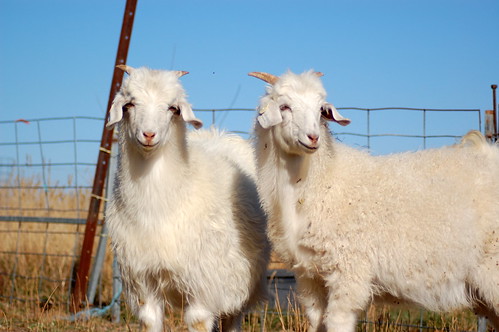
The experts at Sferra explain:
Cashmere is wool from the Cashmere goat. The majority of the world’s Cashmere today comes from China and Mongolia, with the finest found in the Gobi Desert region of Inner Mongolia. Cashmere goats produce a double fleece. The fine, soft undercoat (or underdown) of hair is mingled and must be de-haired from the straighter and much coarser outer coating of hair (or guard hair.)
Cashmere is characterized by its fine, soft and strong fibers, which are highly adaptable and skillfully spun into yarns. This luxuriant wool provides a natural, light-weight insulation with a silken feel. The resulting Cashmere fabric is highly durable and will last for years if cared for properly.
We have several cashmere throws and they really are softer than any other wool products. One of our favorites is the Dorsey Throw from Sferra:
Although cashmere is best cared for by dry cleaning, you can wash it. Use a specially formulated detergent for cashmere, as normal detergents are too harsh for this fine fabric. We like The Laundress Wool & Cashmere Shampoo.
The Inside Scoop on Merino Wool
Many of our wool products are made with merino wool. We’re often asked what it is, and if it’s better than regular wool. What is special about merino wool?
We asked the experts at Sferra, and this is what we learned:
Merino sheep have some of the finest and softest wool of any sheep. Merino wool has an excellent warmth-to-weight ratio when compared to other wools. It wicks away moisture and has superior breathability, which aids in regulating body temperature. Merino wool has an exceptionally soft hand and a strong natural elasticity. It is extremely durable, anti-static, and fire resistant, making it ideal for use in home textiles. Merino is also hypoallergenic, as is most wool.

Merino wool does not have the itchy feel of some wools. Sferra’s Como throw is made from pure merino wool.
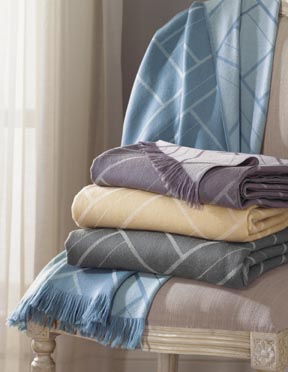
Easy Care Decorating Solutions with Dash & Albert Rugs
Massachusetts based company Dash & Albert makes rugs in every style and pattern you can dream up.
Their cotton rugs, like the Garden Stripe Woven Cotton Rug, are so versatile they look great in a sunny beach cottage, a traditional home, or a modern apartment.
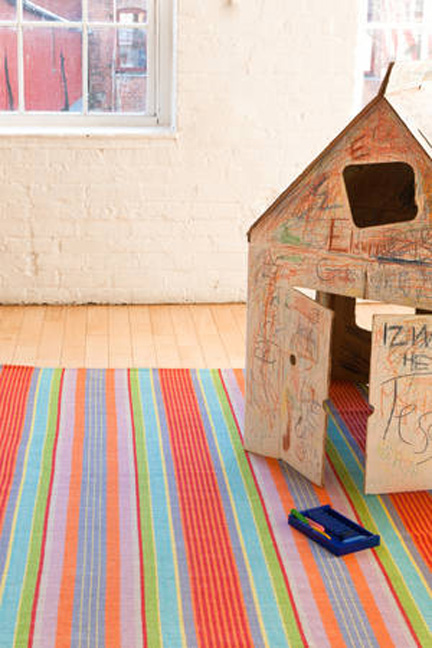
Their wool rugs, like the Gypsy Rose Wool Hooked Rug, are soft, cozy, and great for warming up a room.
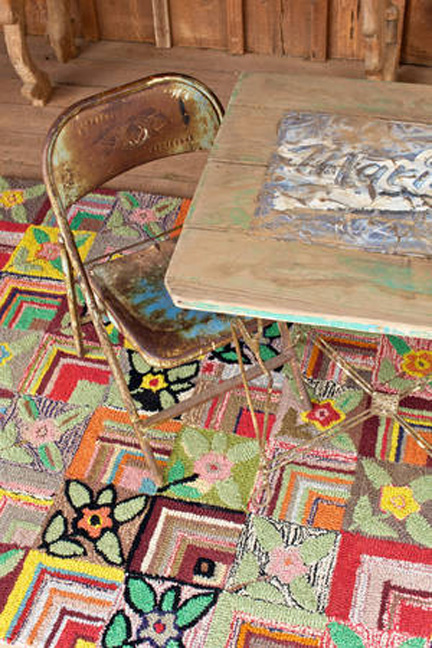
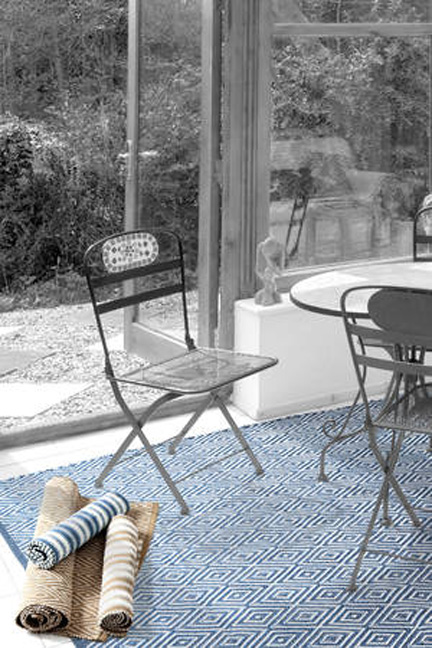
The versatility and ease of Dash & Albert rugs are gaining lots of attention. One innovative blogger/DIY-er decided to do away with her old carpeted stairs in favor of an elegant-looking Dash & Albert runner, transforming a functional staircase into a stylish focal point.

Another clever home blogger wowed us with before-and-after shots of easy-clean Dash & Albert rug. She used Clorox Clean-Up and a simple scrub brush to make her rug look like new in a minute flat.
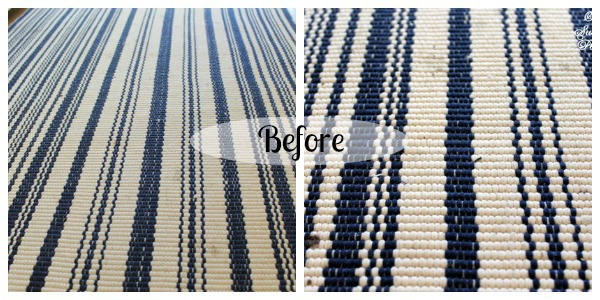
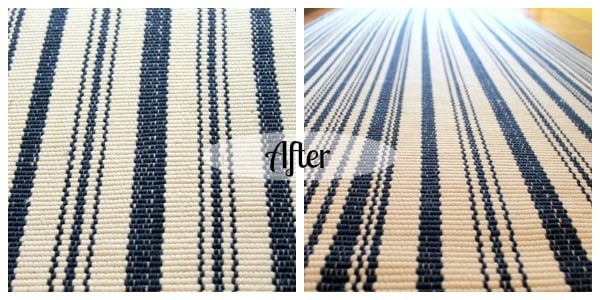
Browse all of our Dash & Albert rugs (and did we mention beautiful, comfy throws?) at GraciousStyle.com.
Why Should I Use a Mattress Pad?
You can certainly get a good night’s sleep without one, but having a mattress pad adds a little extra luxury to your bed. And isn’t that something we could all use?
Sferra recently gave us the lowdown on mattress pads:
- It offers extra cushioning, enhancing the overall comfort of the mattress. You experience the added softness of a mattress pad, while not taking away from the support of the mattress.
- It provides an added layer of warmth between the mattress and your body. In colder weather, or in well-air conditioned rooms, a mattress pad acts as insulation and helps keep you warm.
- It acts as a buffer between the sheets and the mattress, helping protect against stains. An unprotected mattress can become stained very easily, even from natural perspiration.
- It protects the integrity of the mattress, especially the stitching along the seams. A protected mattress will have a much longer useful life.
We couldn’t agree more, which is why we have a selection of mattress pads to satisfy the most discriminating sleeper. We love the Arcadia mattress pad from Sferra, which contains soft, hypoallergeneic Pluma-Fil down alternative. The pure white cotton sateen ticking is so pretty, you might be tempted to leave the sheets off.
The Secret Behind Sferra’s Easy-Care Tablecloths
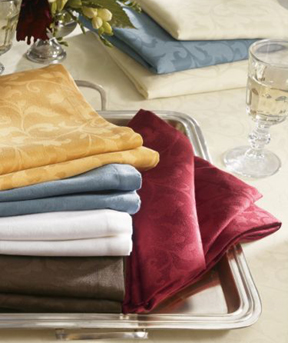 Some of our most popular table linens are the easy-care Orchard and Juliet collections from Sferra, and for good reason.
Some of our most popular table linens are the easy-care Orchard and Juliet collections from Sferra, and for good reason.
They feel so soft they are often mistaken for pure cotton and they don’t require ironing – perfect for the busy hostess.
We’re often asked about how they work. What’s so special about them that makes them easy-care?
We learned the answer from Sferra.
Both collections use ring-spun polyester yarns, which are stronger and more durable than the commonly used open end yarns.
Producing open end yarns is faster and less expensive, while producing ring-spun yarns is more expensive and takes up to five times longer. In the ring-spun process, the yarn is made by continuously twisting and thinning the strands. This twisting results in a stronger yarn with a significantly softer hand.
Ring-spun yarn gives our Orchard and Juliet tablecloths many good qualities:
- They are more resistant to dirt
- The colors stay rich and vibrant with no fading
- They are twice as strong as tablecloths made from open-end yarns
- They resist tearing and pilling, so they look beautiful for longer
- They don’t wrinkle easily, so you don’t have to iron them
The ring-spun yarn also creates a lighter and softer tablecloth, with a more luxurious drape. Juliet is a great example – the tablecloths could easily be mistaken for cotton, they drape so beautifully.
Engineering for Happiness: Why Design Matters
Most designers tell you they learned to appreciate design at an early age. I did not. I learned to appreciate the value of design on the job — specifically, the job sites where Carolina and I renovated or built five different houses over a ten year period.
When we’re planning a house, we’re often trying to figure out what to do with the space. A simple example of that went something like this: Take a look at this picture:
Huh? Look at what? There’s nothing but an empty corner here.
Now look again:
Gee, wouldn’t it be nice to sit here and relax, maybe read a book for a few hours?
“Aha!” says the Engineer in the Left Brain: “Design is really engineering. Just like engineers tweak components and interactions to maximize their functional usefulness, interior designers do the same thing with all the components that go into a home.”
“You know, a more useful space is more valuable space,” chimes in the Wharton grad in the Left Brain.
But surely good design must be more than just engineering for “functional” usefulness, lest we go back to living in Stalinist concrete blocks? (Which weren’t very functional either, by the way. Trust me.) Look at the picture again and ask yourself: Is this a chair you’d want to sit in and relax for a few hours? Or would you be happier curling up into one of these?
Source: Google Images search for “armchair”
No matter what your style, the right chair will make you want to relax in it, not to mention feel good about yourself for having such great taste. The wrong chair will inevitably elicit an “I can’t believe my husband/wife/mom/dad/grandmother bought that thing” whenever you see it. In other words, good design should make you happy.
When you walk into a space and everything feels right, it’s because somebody designed it correctly for you. The space should be useful, and you should feel happy when you’re there. That’s why design matters.
Design for the Analytically Minded
I am not a designer. But I’ve learned a lot about design, and I’ve grown to love it.
I’m probably your poster child left-brainer. I went to Wharton and worked as a fund manager, managing investments for pension funds, central banks, foundations, and hedge funds. I’ve also been writing software since I was eleven, and today, I’m responsible for the technology that runs Gracious Style.
“Designer” was simply never something I imagined myself to be. Yet, over the last twelve years of working at Gracious Style, I’ve learned a lot about design. This knowledge of design has opened up my eyes, and I have a better appreciation of people and culture because of it. It has also helped me in my other professional endeavors. From software to real estate development, I can now see that success often hinges on better design.
I think — I know — that there are a lot more people like me out there. We’re not professional designers, but we innately appreciate good design, even if it’s in the form of a well-crafted deal or a well-designed app. We’d like to know more about design, but in that structured, top-down, ask-all-the-questions way of ours.
So today I’m starting a new series, “Design for the Analytically Minded,” to share with you how one finance/technology person learned design, what it’s taught him, and why it’s opened his eyes to the world.
– Si Chen


